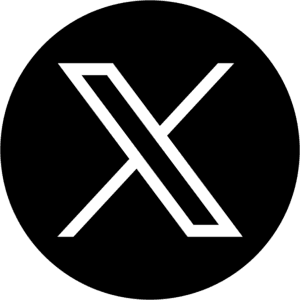Why You Need a Fresh Approach to SaaS Growth in 2025
The SaaS space has reached an inflexion point. It’s no longer enough to have a product that solves a problem—your competitors likely solve the same product too. Success now hinges on differentiation, data, customer experience, and operational efficiency.
Moreover, customer acquisition costs (CAC) are skyrocketing, privacy laws are tightening, and users demand seamless, hyper-personalized experiences. If you’re not ahead of the curve, your SaaS startup could easily fade into obscurity.
The following five growth hacks will help your SaaS business not just survive but thrive in 2025.
1. Hyper-personalised onboarding with AI
Why it matters:
First impressions make or break customer retention. If your users don’t immediately understand your value, they’ll churn faster than you can say “trial extended.”
What will work in 2025:
AI-powered onboarding is no longer a luxury—it’s a necessity. Customers expect a personalized experience tailored to their industry, role, and goals. SaaS companies that leverage AI to deliver hyper-customized onboarding flows are seeing retention rates soar.
How to implement it:
Use AI to analyze a user’s behaviour during the first few interactions with your product.
Create dynamic onboarding flows that adapt to the user’s needs (e.g., interactive tutorials, tooltips, and video guides).
Integrate conversational AI into your onboarding process to answer user questions in real time.
Example Tools:
Appcues: For personalized on-boarding experiences.
2. Build a Community-Led Growth Strategy
Why it matters:
Communities drive trust, loyalty, and word-of-mouth referrals—all of which are critical in a competitive market. A strong community can also double as your product’s unofficial support and marketing team.
What will work in 2025:
Customers want to feel like they’re part of something bigger. SaaS companies that invest in community-building are fostering brand advocates who organically spread the word. Platforms like Discord, Slack, and Reddit have become hotbeds for SaaS communities.
How to implement it:
Create a branded community where your customers can share knowledge, ask questions, and connect with peers.
Use your community to gather product feedback and improve features.
Offer exclusive perks for community members, such as beta access or special discounts.
Example Tools:
Circle.so: For building private communities.
3. Leverage Product-Led Growth (PLG) Metrics
Why it matters:
In the SaaS world, your product isn’t just a tool—it’s your best salesperson. PLG uses your product to drive acquisition, retention, and expansion.
What will work in 2025:
SaaS startups are doubling down on PLG by focusing on product usage analytics. These insights help identify where users are dropping off and where upselling opportunities lie.
How to implement it:
Monitor key PLG metrics such as Time to Value (TTV), Product Qualified Leads (PQLs), and Net Revenue Retention (NRR).
Use in-app nudges to guide users toward “aha moments” (e.g., features that demonstrate the product’s value).
Focus on upgrading free users to paid plans by optimizing your freemium experience.
Example Tools:
Mixpanel: For tracking product usage analytics.
Heap: For understanding user behaviour.
4. Optimize for Voice Search and Conversational Commerce
Why it matters:
Voice search and conversational commerce are redefining how people discover and interact with SaaS products. Data indicates that we are at a tipping point in the voice search trend. Optimising for these trends can give you a competitive edge.

What will work in 2025:
With AI assistants like Alexa and Google Assistant becoming mainstream, voice-driven interactions are becoming the norm. SaaS startups that ignore voice search optimisation risk losing visibility.
How to implement it:
Create conversational landing pages optimised for long-tail, voice-based queries.
Develop integrations with voice assistants (e.g., “Alexa, tell me about the best project management tools”).
Focus on natural language processing (NLP) to ensure your content aligns with conversational search patterns.
Example Tools:
AnswerThePublic: For identifying voice-friendly keywords.
5. Invest in Sustainability and Ethical Practices
Why it matters:
Customers increasingly care about the values behind the products they use. A SaaS startup with a clear mission and sustainable practices can win loyal customers who align with its values.
What will work in 2025:
Sustainability is no longer optional—it’s a differentiator. SaaS companies that embrace green hosting, reduce energy consumption, and promote ethical AI are earning customer trust.
How to implement it:
Use eco-friendly hosting providers like Google Cloud (carbon-neutral) or AWS (renewable energy-powered).
Be transparent about how your AI algorithms work to avoid ethical concerns.
Showcase your commitment to sustainability in your marketing efforts.
Example Tools:
Cloudflare: For eco-friendly content delivery.
Ecologi: For offsetting your company’s carbon footprint.
Final Thoughts: Planning for SaaS Growth in 2025
Growth in SaaS isn’t just about acquiring more customers—it’s about creating a sustainable, scalable, and customer-centric business. The hacks above are not one-size-fits-all solutions but frameworks you can adapt to your unique needs.
By focusing on AI-driven onboarding, community-led growth, PLG metrics, voice search optimization, and sustainability, your SaaS startup can carve out a space in even the most crowded markets.
Resources to Dive Deeper
Product-Led Growth: How to Build a Product That Sells Itself by Wes Bush
The Membership Economy by Robbie Kellman Baxter
Voice Search Optimization Guide by Moz
Your Turn!
Which of these growth hacks will you implement first? Comment below or share your own insights!







